Through the rolling hill country the river
twists and turns like a shining ribbon. There is a quiet place in a valley where
once upon a time the Comanche
Indians roamed free.
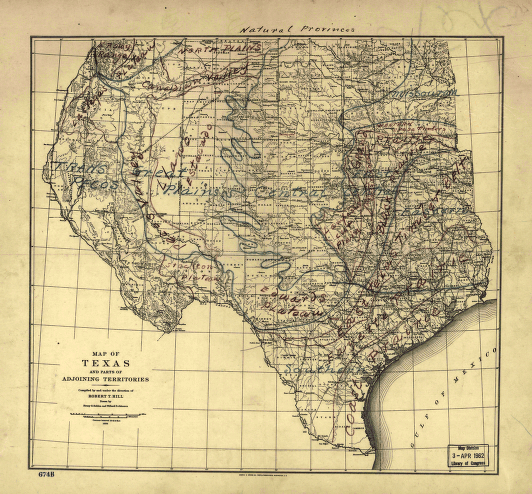
German Settlers
The land was teeming, full of game and had little to
no constraint. In a quiet valley beside the river surrounded by steep hills the
first German Settlers in 1800 found a place to start again after enduring war
and grinding poverty. With land grants in hand, the first immigrant families arrived at what would
later became Wimberley.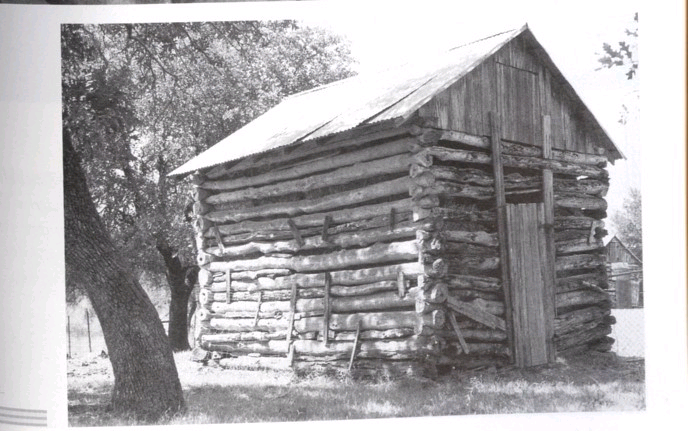 What they found must have been a little patch of heaven in the
Texas frontier. The surrounding area had deer and fish from the river to ensure
that in lean times food would be plentiful.
What they found must have been a little patch of heaven in the
Texas frontier. The surrounding area had deer and fish from the river to ensure
that in lean times food would be plentiful.
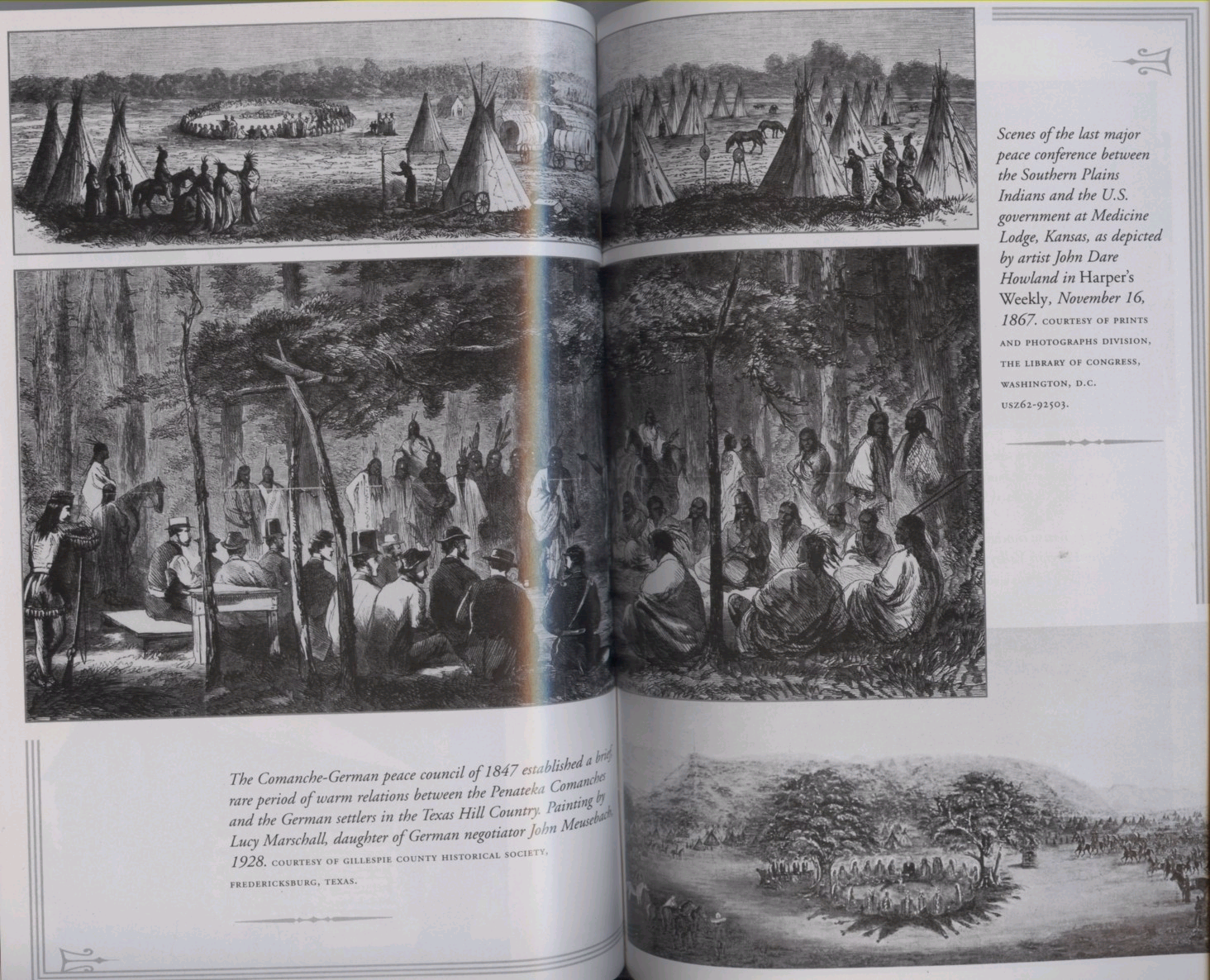
Stories
Hill Country
The German settlers attempted to live in
peace with their Indian neighbors and for a few short years the easy
co-existence held, but as more and more German immigrants poured into the open
spaces of Texas, the Indians were pushed further and further way from their old hunting
grounds. Later the Indians would make their displeasure known to their
German neighbors, with a series of raids into the heart of the Hill Country. A few
of these raiders left with more then just some horses, but with some children of
the German settlers. Most famous of the stolen children would be Herman Lehmann.
After living with the Indians for a year or so he returned with a group of
Indians. The raid takes them close to Wimberley when they were spotted by Joseph
Wimberley who fled on a grey horse.
Founders
Wimberley was first named Glendale. But that name would change when
William C. Winters settled his family in the early 1850s. Mr. Winters built a saw
mill and later a grist mill, the first of many mills in what would later become
Wimberley. The Civil War raged in the east, the small community contributed to
the confederacy in little ways like by making charcoal on the banks of the
Blanco River and collecting bat droppings and shipping all of it north to
Austin. In 1864 Mr. Winters died and passed his holdings on to his son in law
John Cude. The town was then called Cude's Mill.
Economy
In 1870 the property changed hands again. Mr. Pleasant
Wimberley purchased the mill from Mr. Cude, the town changed its name to
Wimberley's Mill and in 1880 the town submitted to the post office to be called
Wimberleyville but the "ville" was dropped and from then on the town finally
came into its name Wimberley.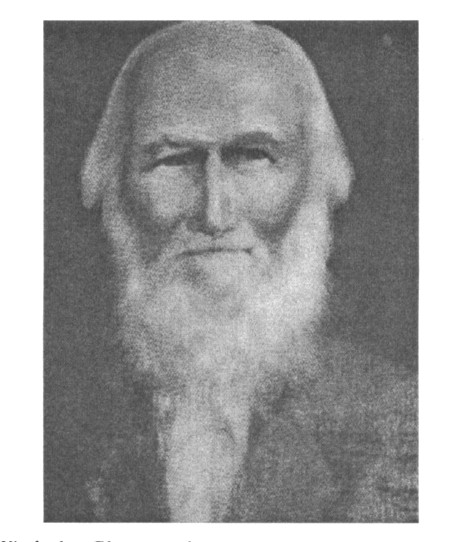
With its name in place, Wimberley prospered. In addition to the
saw and grist mills, a buhrstone flour mill and a shingle mill had been added.
Mr. Wimberley added a cotton gin. Eventually the town boasted a school, a
general store(which today is called the Old Mill Store) as well as a butcher
shop and a blacksmith shop that still stands today.
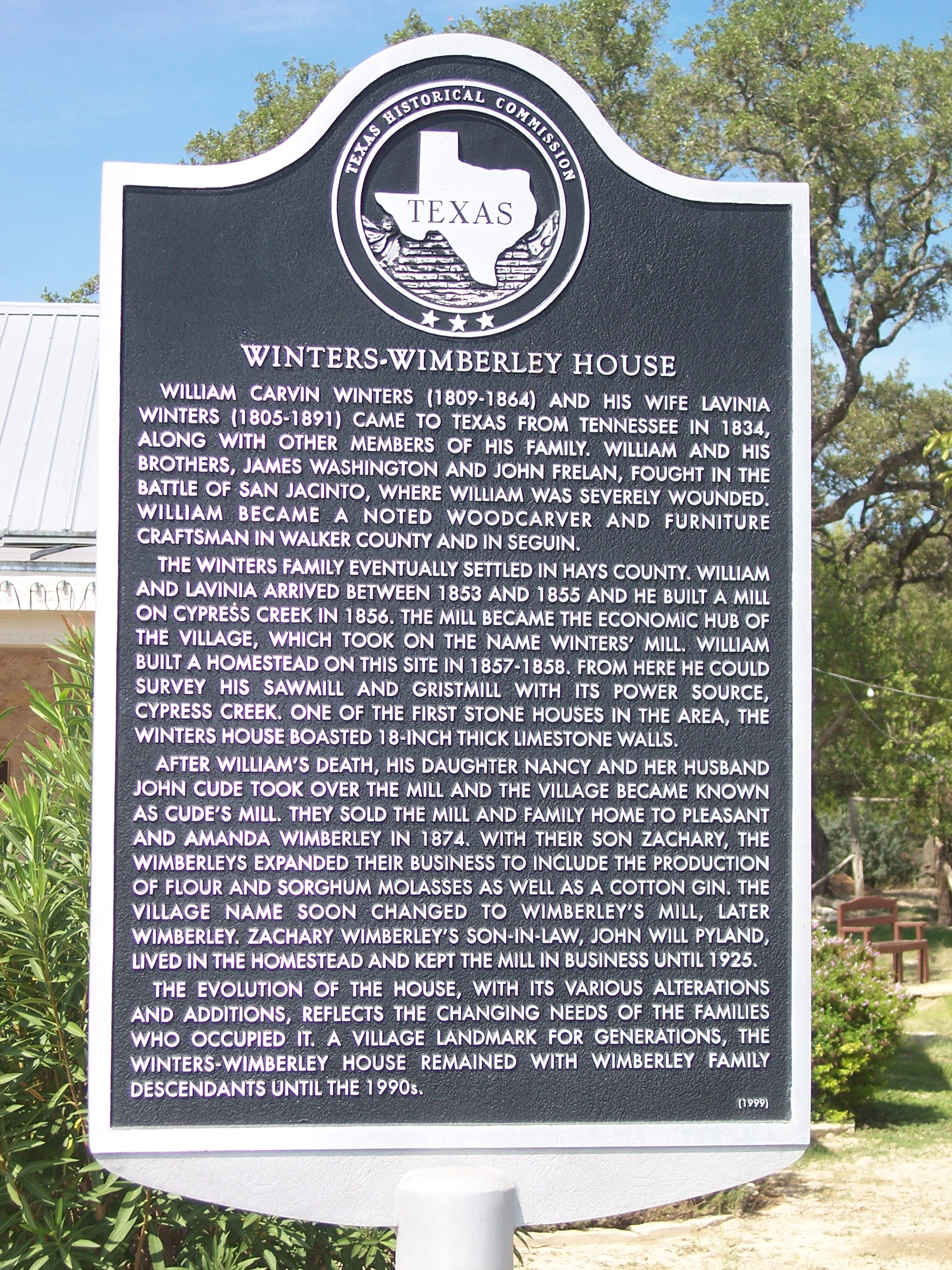
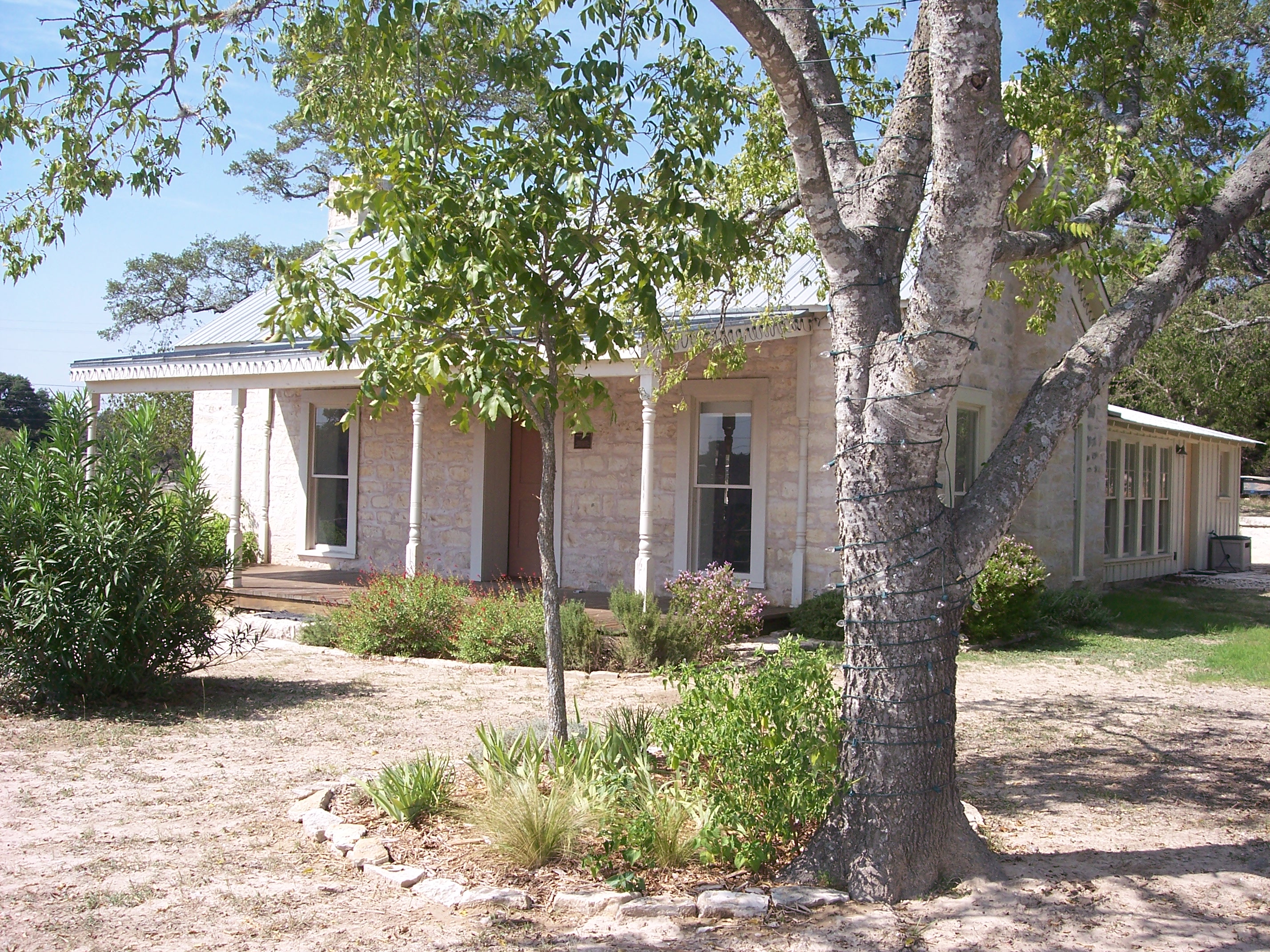
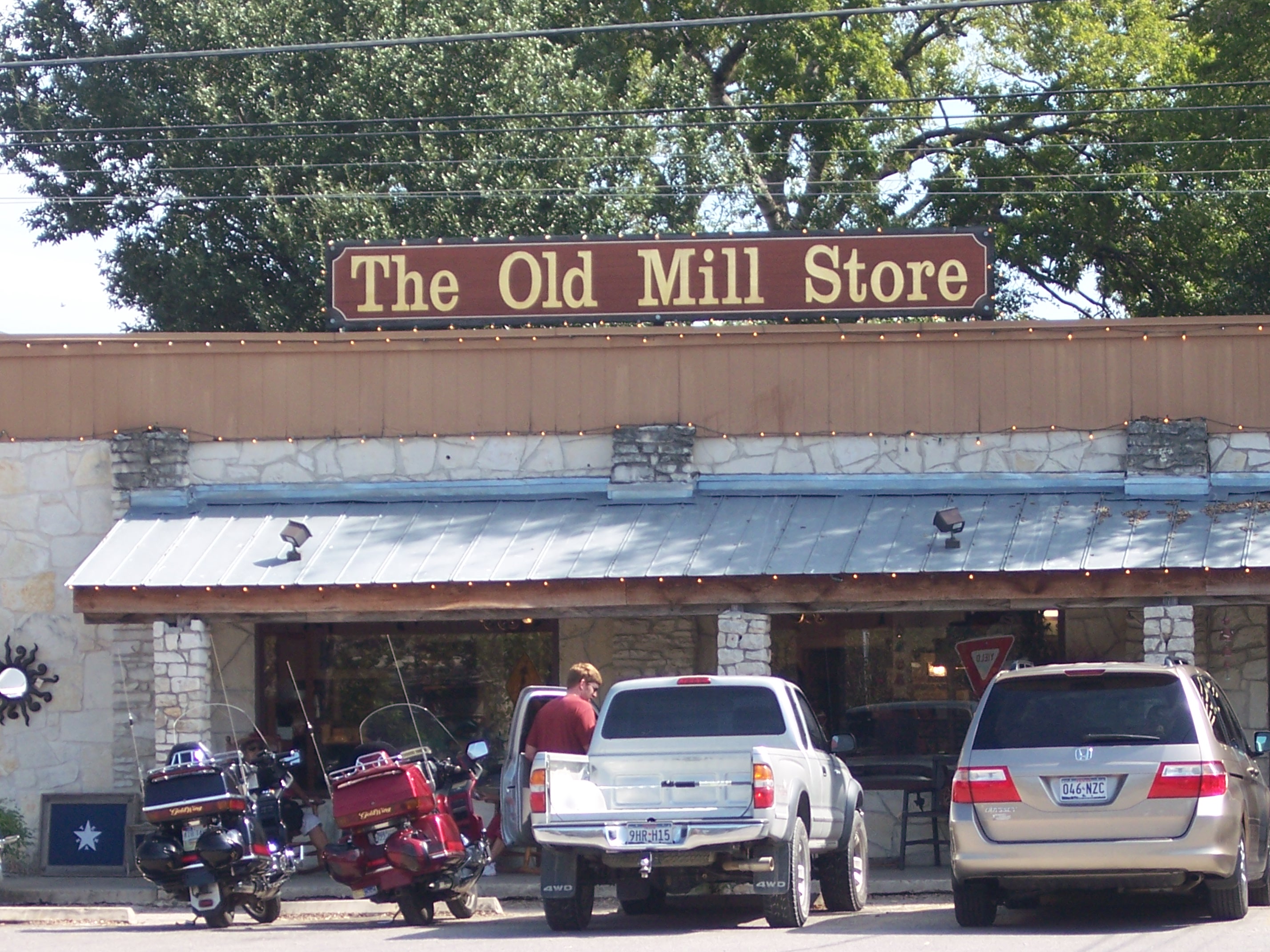 ,
,
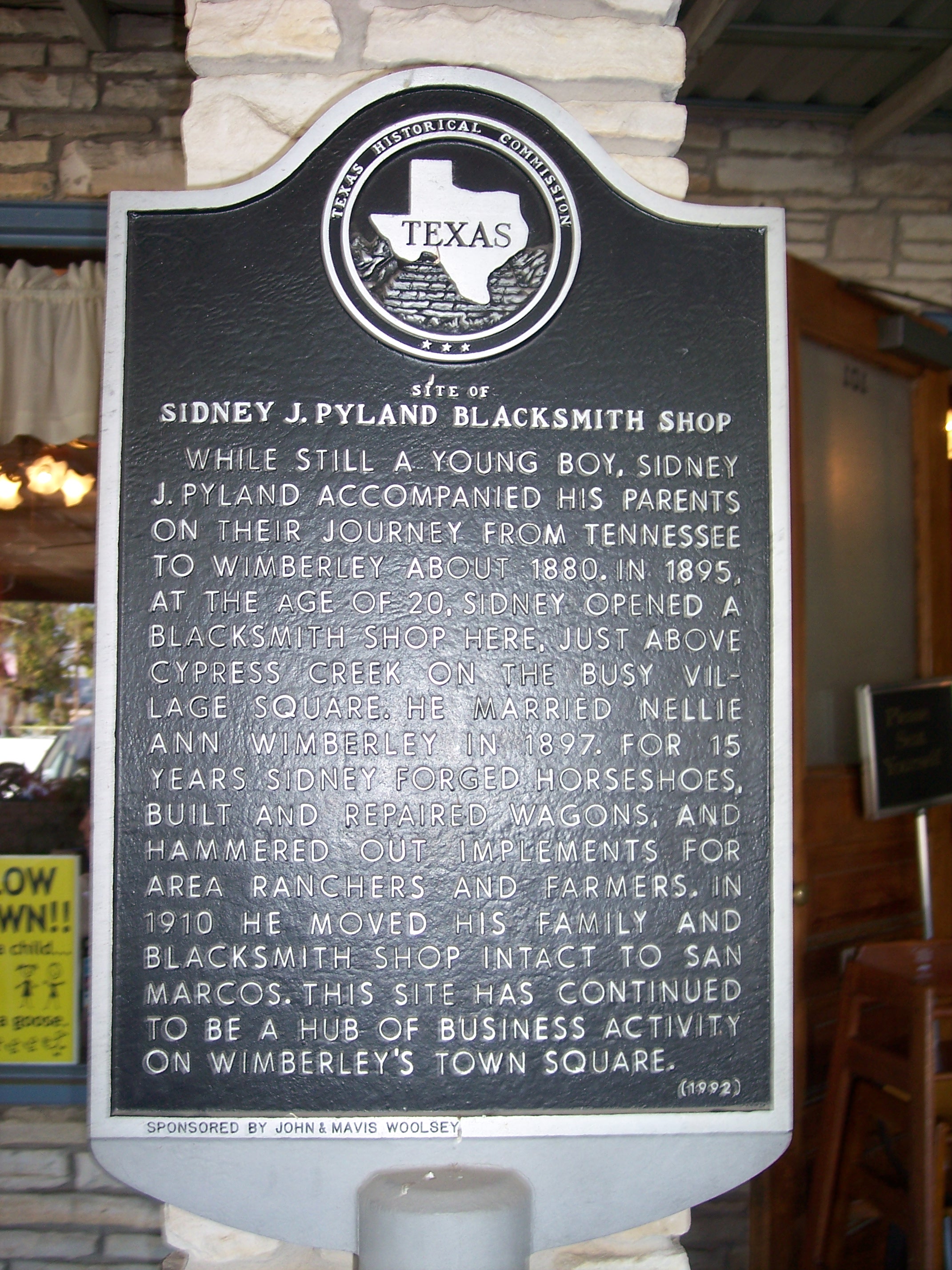
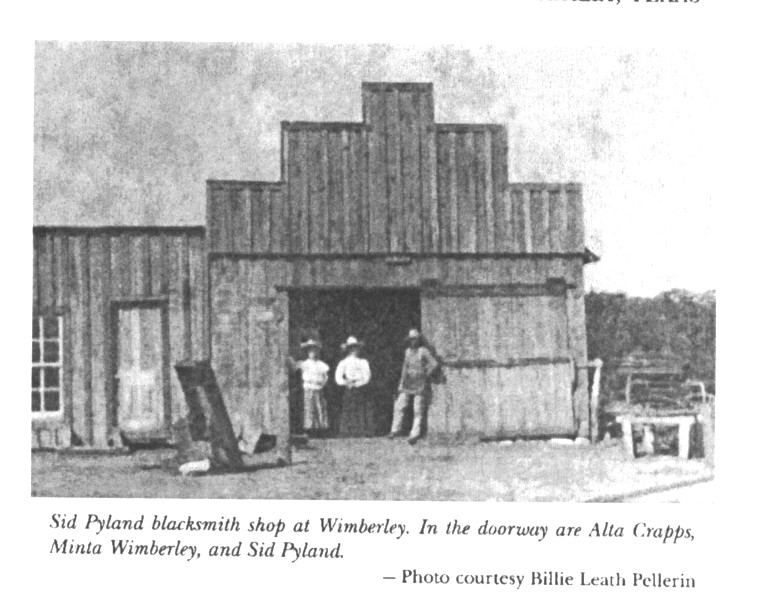
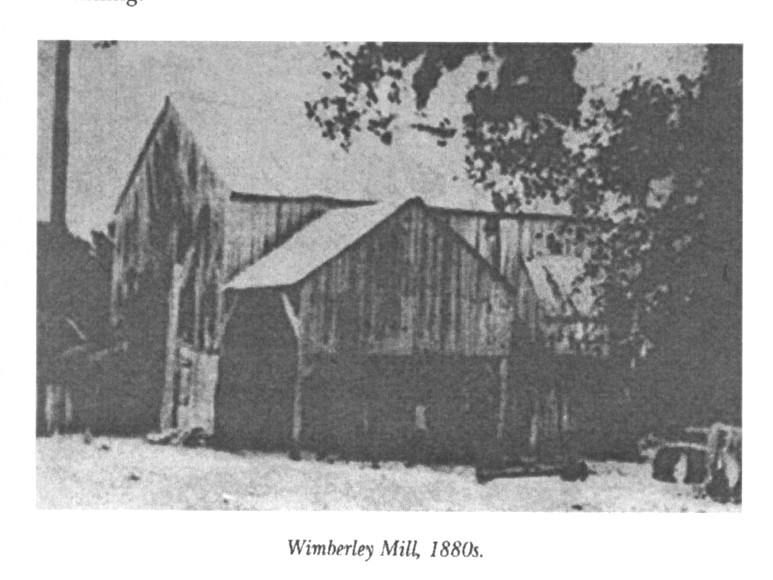
Prospects
Wimberley is located just 20 minutes outside of San
Marcos,
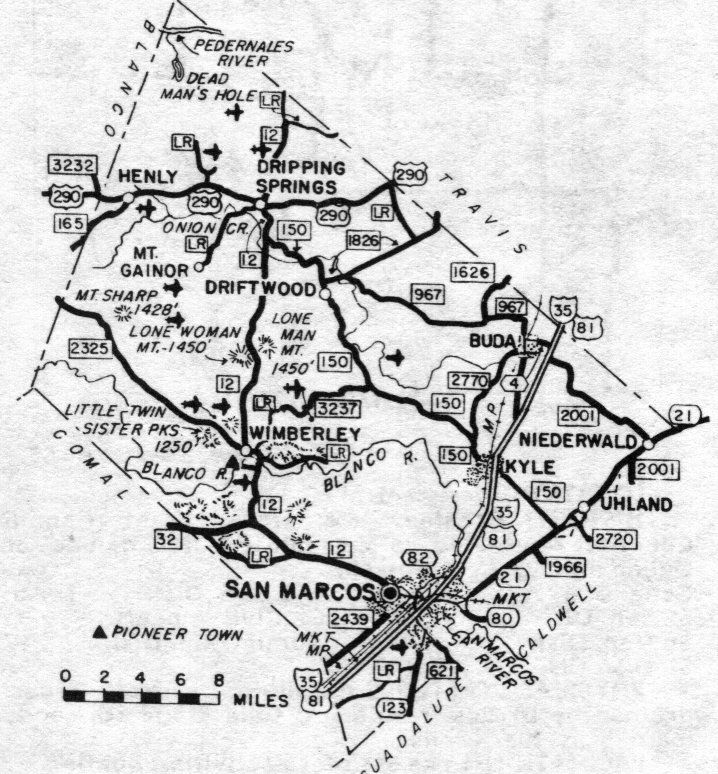
30 minutes south of Austin
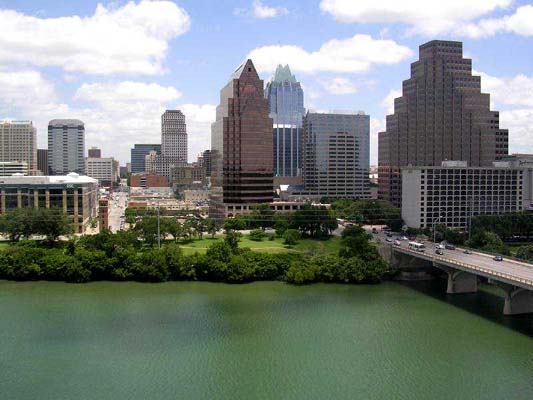
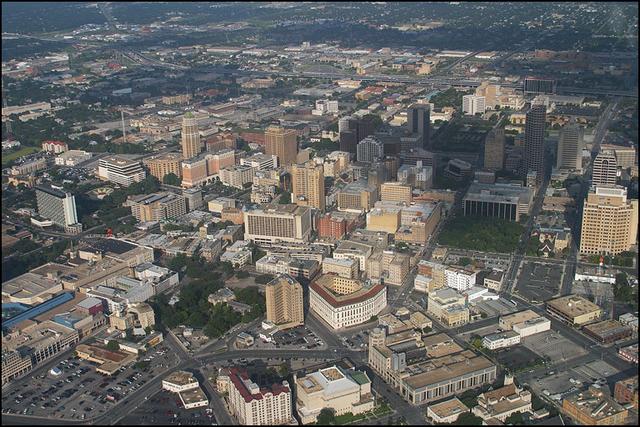 and 30 minutes north of San
Antonio.
and 30 minutes north of San
Antonio.
The town upon initial impression is quaint beyond words, it is off
the beaten path and has an attitude all its own. The old stone homes of families
long gone still stand and are historically marked. Today Wimberley is alive with
commerce and cats.
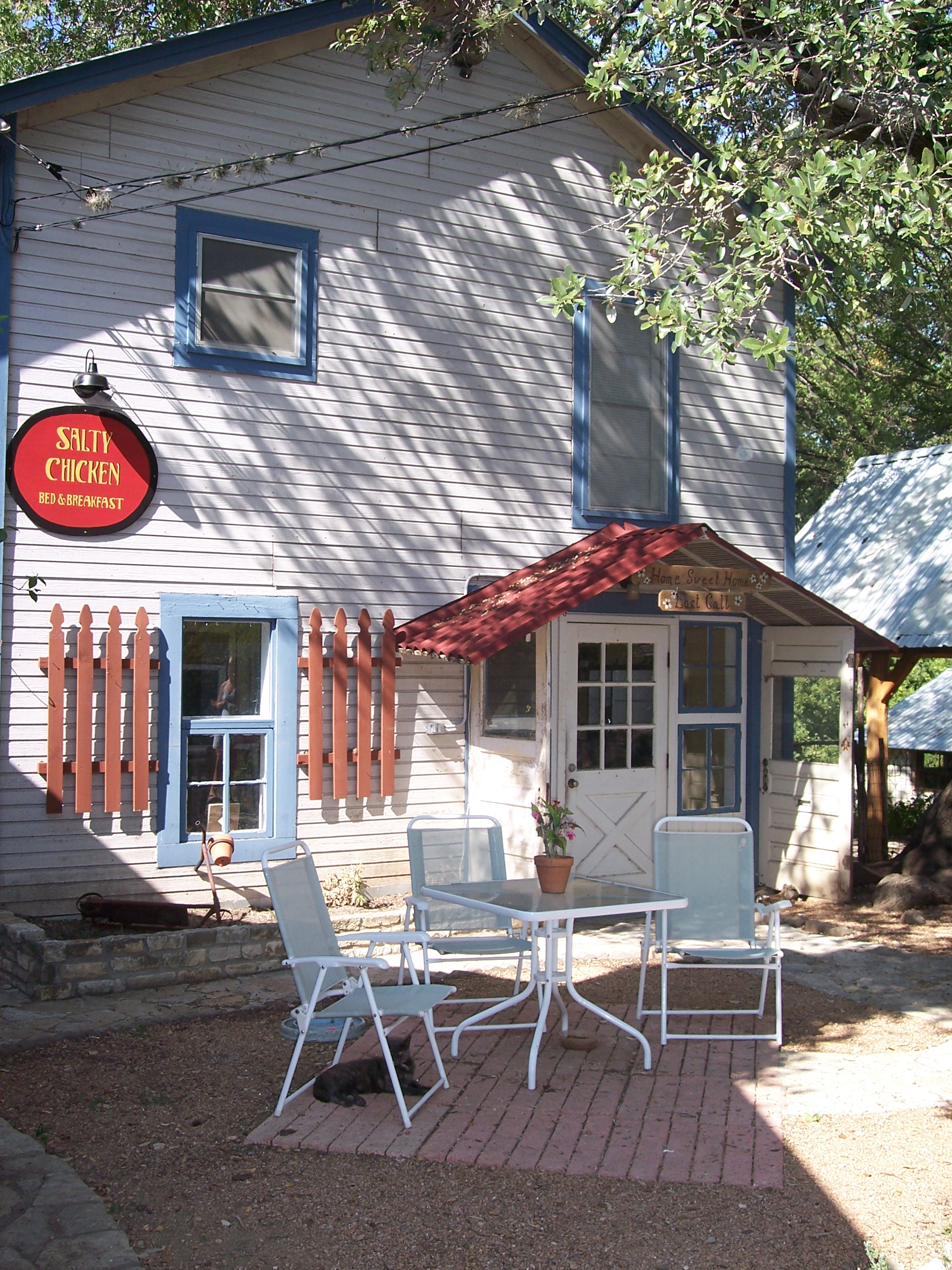
When interviewed about what the cat like most about Wimberley, she
meowed, walked over to her food dish and politely ignored us until we left.
The locals put put food along the store fronts to feed these feral
(but some times very friendly animals). The cats lay in the cool shade along the
river or steal warm spots in the sun on the stone patios of restaurants and
boutiques.
Interviews
As we walked about Wimberley, we stopped and asked some of the
local about why they feel Wimberley is the best place in Texas to be.
Mr. Marcus, owner of the antique store "Shared Memories" Mr. Marcus
relocated from the "Smog Ball" of Houston for the peace of Wimberley 2 years
ago. He feels that the biggest problem in Wimberley's future is the city folk
moving to the country and they try and bring all the things they didn't like
with the city to Wimberley. Moving to Wimberley is a lifestyle change. But don't
try and change Wimberley, let Wimberley change you.
We also stopped to talk to Mr. Craig D. Payne, a real estate
agent who has lived in Wimberley 33 years. Mr. Payne feels the Wimberley is a way of
life, because if you didn't want to be here you wouldn't. The biggest problem
Wimberley currently faces is population growth, and the water, food and schools
try and catch up to such an expansion. The future of Wimberley is not only in
its vineyards and glassmaking, but in film and music. Wimberley is blessed in
its location near the major metropolises of Austin and San Antonio. Modern
technology such as the internet has helped not only the real estate business but
also helped people find out about Wimberley.
Mrs. Julia, an employee at Patchouli Boutique, was originally from
up-state New York, and came to Wimberley via Dallas, she could not imagine going back to
living in the city ever again. Mrs. Julia is so very impressed with the school
system and how the kids are so respectful and knowledgeable. She and her husband
stumbled upon Wimberley when they traveled down to San Antonio for a business
opportunity, when they returned to Dallas they sold their home 2 days later and
have never looked back.

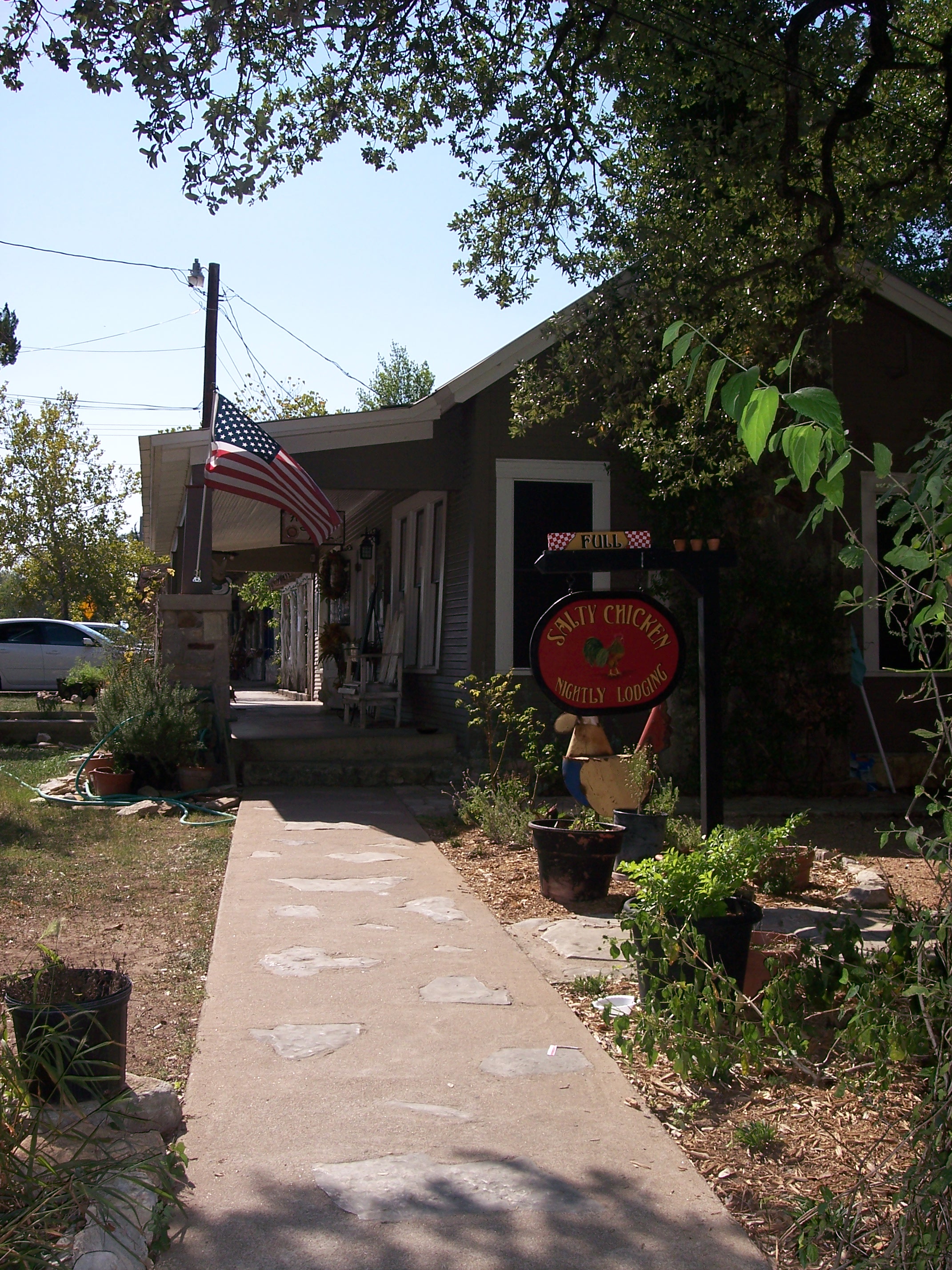
Wimberley's future seems to be held in the vineyards that have
been growing in the Hill Country for the last 20 years. With the proper soil and
temperatures the wine business has been gaining in momentum in the last few
years. Wimberley has its very own hill country secret in the Wimberley Glass.
Tim de Jong opened Wimberley Glass Works in 1992 and it has since become
one of the premier art glass studios and galleries in the Southwest. We stopped
into Wimberley Glass to interview the owner. He
spoke with nothing but pride of Wimberley and the ever-expanding community there
and how the town had afforded him the opportunity to expand his company while
still staying true to what Wimberley was about. "Wimberley Glass started out
making glass goblets, and from there the business expanded." The company does not
retail anywhere outside of Wimberley, because Wimberley provides that small town
atmosphere. Two years ago they had to pull up stakes and move a few miles outside
of the town's center, due to the increase in popularity and business. The new
facility was built from the ground up specifically for glass making. Mr.
de Jong's company hopes to expand but they will strive to keep the small town
feel of their products.
Cemetaries
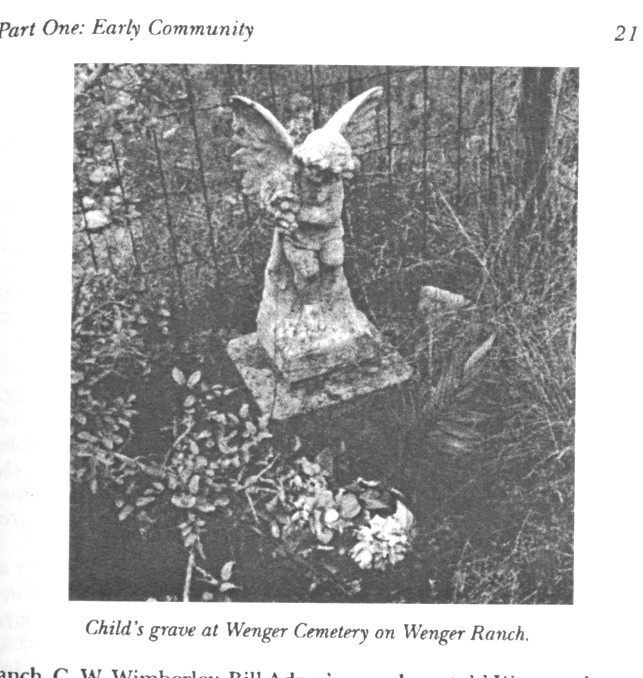
Wimberley and its surrounding areas have an immense amount of
cemeteries, as do most towns from that era. There are many cemeteries that exist
even that are not documented. Cemeteries began in the early days on the property
of the homes. Family members would usually be buried there along with friends
and neighbors. Once churches and schools were created, people then began to be
buried at the church or school. In the early days the churches were held at the
schools. It was not until between 1923 and 1924 that Wimberley actually had
their first dedicated church. It was called the Wimberley Christian Church.
Many of the original family cemeteries have disappeared in Wimberley. The
cemeteries have suffered from being neglected and the weathering of time. A lot
of the headstones and grave markers have also been destroyed by vandalism
throughout history. Not very many of the Wimberley cemeteries belong to a cemetery
association that would have helped preserve them. The early grave
markers in Wimberley were made of wood and metal. They would both eventually
disappear into the earth. It was not until S.P. Borath moved into town and began
making his mortar gravestones out of gypsum. His gravestones were made at the
Pleasant Wimberley Mill. His gravestones can still be found to this day.
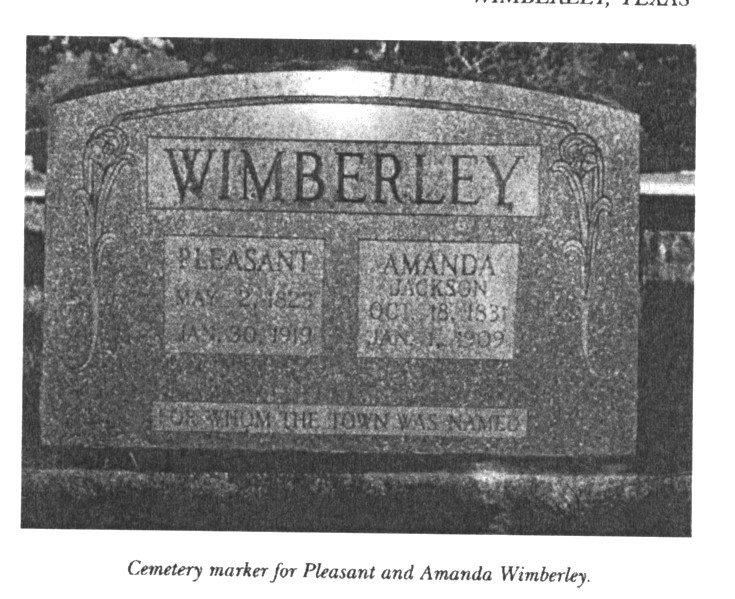 The Wimberley Cemetery is on a tract of land that was
originally patented to Amasa Turner in 1847, by the Governor of Texas at the
time, J. Pickney Henderson. The tract of land was 1,280 acres at the time. The
first person to be buried on that plot of land before cemeteries were even
thought of was Melissa Wimberley (1871-1876) she was the child of Pleasant and
Amanda Wimberley. There are many confederate
veterans of the Civil War, Mexican War veterans, Seminole War veterans,
Texas Rangers and others buried in the Wimberley cemetery. An unusual grave in Wimberley belongs to a Jamaican man that had served as a
British seaman. He was brought to Wimberley to work on the ranches for
the Ragsdale and Henson families. He also was known for driving the mail hack
from Wimberley to San Marcos in the 1890's. There are 11 smaller cemeteries that
are all located within 5-7 miles of Wimberley. The Adare Cemetery also known as
the Wayside Cemetery is just 5.2 miles from Wimberley. The cemetery is presently
located on the Wenger Ranch. The cemetery was a family-owned cemetery by William
Branch Adare and consists of the family and some confederate veterans. The
Blackwell Cemetery is an abandoned cemetery that merges with the Wilson
Cemetery. There are said to be veterans of the civil war buried there that died
in 1890. The family cemetery is located approximately a mile west of Wimberley
off River Road on private property. The Fulton cemetery is historic family
cemetery that is near Wimberley, but is lost now. A famous Indian Chief Gray
Eagle died in 1857. He is buried in the Cruz Cemetery which is another private
family cemetery located on land that was once owned by Santa Anna Cruz.
The cemetery is just 6 miles from the Wimberley square. If you want to visit you
must get permission from the Whisenant family. The Heaton-Henson Cemetery has
also been neglected and mostly ruined. There are many veterans buried there
along with families and even Watkins Nobles. He is said to be resting in an
unmarked grave. That information conflicts with earlier documents saying that he had been
massacred by the Mexicans. He actually escaped and homesteaded in Wimberley. The
Hugo Cemetery is located about 4 miles from Wimberley on the Hugo-Purgatory
Road. The cemetery served as a burial place for the Williamson family since
1851, and is famous for its rustic beauty. The cemetery has a fence
around it that was constructed just after World War II. A very interesting
cemetery is located just 6 miles northeast of Wimberley, it is the Jacobs Well
Cemetery. The cemetery began when Moses Bond Egger was thrown from his horse in
a frigid February and found frozen to death in 1883. The cemetery was created
around his grave just where he was found and buried. This cemetery is still used
by descendents of the families today. It is very well taken care of and has a
cemetery association. The Mt. Sharp Cemetery was created when Alex Jennings
donated 2 acres of land that was to be equally divided into a school and
cemetery. This family cemetery had a lot of legal problems due to land that had
been deeded. The family was not aware of the law that prevented cemeteries from
being deeded or sold. A cemetery association was formed and rules and
regulations were set down from this cemetery. It is located about 8 miles west
of Wimberley. The Pleasant Valley Cemetery is just about 8 miles from Wimberley.
It is also known as the Peal Cemetery after the man that the land was donated
from. Another name for the cemetery is the Valley Ford Cemetery. The cemetery
has had a fair amount of damage from vandalism through the years and most graves
have been desecrated. The most recent fence was created in 1980. Wenger Cemetery
is just above the Adare Cemetery on the Wenger Ranch. That cemetery has a single
grave on it, that of a young girl that died at the age of 8. She was a
member of the Stockman family. Mr. and Mrs. Wenger were informed of the grave
from Bill Adare's grandson. Once they found the grave the put a decorative iron
fence around it and a beautiful angel statue. To this day people often place
flowers on the little gravesite. Lastly the Wilson Cemetery is said to be
located near where the Wilson Creek enters the Blanco River. There are said to
be many family graves there from the Winters family. The cemetery however is not
to be found anymore due to the floods in the area.
The Wimberley Cemetery is on a tract of land that was
originally patented to Amasa Turner in 1847, by the Governor of Texas at the
time, J. Pickney Henderson. The tract of land was 1,280 acres at the time. The
first person to be buried on that plot of land before cemeteries were even
thought of was Melissa Wimberley (1871-1876) she was the child of Pleasant and
Amanda Wimberley. There are many confederate
veterans of the Civil War, Mexican War veterans, Seminole War veterans,
Texas Rangers and others buried in the Wimberley cemetery. An unusual grave in Wimberley belongs to a Jamaican man that had served as a
British seaman. He was brought to Wimberley to work on the ranches for
the Ragsdale and Henson families. He also was known for driving the mail hack
from Wimberley to San Marcos in the 1890's. There are 11 smaller cemeteries that
are all located within 5-7 miles of Wimberley. The Adare Cemetery also known as
the Wayside Cemetery is just 5.2 miles from Wimberley. The cemetery is presently
located on the Wenger Ranch. The cemetery was a family-owned cemetery by William
Branch Adare and consists of the family and some confederate veterans. The
Blackwell Cemetery is an abandoned cemetery that merges with the Wilson
Cemetery. There are said to be veterans of the civil war buried there that died
in 1890. The family cemetery is located approximately a mile west of Wimberley
off River Road on private property. The Fulton cemetery is historic family
cemetery that is near Wimberley, but is lost now. A famous Indian Chief Gray
Eagle died in 1857. He is buried in the Cruz Cemetery which is another private
family cemetery located on land that was once owned by Santa Anna Cruz.
The cemetery is just 6 miles from the Wimberley square. If you want to visit you
must get permission from the Whisenant family. The Heaton-Henson Cemetery has
also been neglected and mostly ruined. There are many veterans buried there
along with families and even Watkins Nobles. He is said to be resting in an
unmarked grave. That information conflicts with earlier documents saying that he had been
massacred by the Mexicans. He actually escaped and homesteaded in Wimberley. The
Hugo Cemetery is located about 4 miles from Wimberley on the Hugo-Purgatory
Road. The cemetery served as a burial place for the Williamson family since
1851, and is famous for its rustic beauty. The cemetery has a fence
around it that was constructed just after World War II. A very interesting
cemetery is located just 6 miles northeast of Wimberley, it is the Jacobs Well
Cemetery. The cemetery began when Moses Bond Egger was thrown from his horse in
a frigid February and found frozen to death in 1883. The cemetery was created
around his grave just where he was found and buried. This cemetery is still used
by descendents of the families today. It is very well taken care of and has a
cemetery association. The Mt. Sharp Cemetery was created when Alex Jennings
donated 2 acres of land that was to be equally divided into a school and
cemetery. This family cemetery had a lot of legal problems due to land that had
been deeded. The family was not aware of the law that prevented cemeteries from
being deeded or sold. A cemetery association was formed and rules and
regulations were set down from this cemetery. It is located about 8 miles west
of Wimberley. The Pleasant Valley Cemetery is just about 8 miles from Wimberley.
It is also known as the Peal Cemetery after the man that the land was donated
from. Another name for the cemetery is the Valley Ford Cemetery. The cemetery
has had a fair amount of damage from vandalism through the years and most graves
have been desecrated. The most recent fence was created in 1980. Wenger Cemetery
is just above the Adare Cemetery on the Wenger Ranch. That cemetery has a single
grave on it, that of a young girl that died at the age of 8. She was a
member of the Stockman family. Mr. and Mrs. Wenger were informed of the grave
from Bill Adare's grandson. Once they found the grave the put a decorative iron
fence around it and a beautiful angel statue. To this day people often place
flowers on the little gravesite. Lastly the Wilson Cemetery is said to be
located near where the Wilson Creek enters the Blanco River. There are said to
be many family graves there from the Winters family. The cemetery however is not
to be found anymore due to the floods in the area.
Annotated Bibliography: Wimberley TX
Wimberley.org, City of Wimberley This is
the City of Wimberley's home page. It is a very detailed website with links to
many resources. A few include the Wimberley chamber of commerce, local history,
community events and so on. The website is very user friendly.
Southwest Texas Historical Association: Wimberley This is the Southwest Texas Historical Association
Website. The webpage has 29 different historical articles on Wimberley. Most of
the articles published on the website are by Dorothy Wimberley Kerbow.
Scott Zesch, The Captured, (2004) This book follows the history of
child abductions by Indians in the hill country of Texas. The author is related
to one of the captives. The children were taken mostly from the German settlers
in the areas of Fredericksburg and Mason County. Most of the children adapted to
the Indian (Comanche and Apache) way of life. Upon return to their family many
children were unable to adapt back to western civilization. The length of each
abduction varied from child to child.
Terry G. Jordan, The German Seed in Texas (Immigrant Farmers in the
Nineteenth Century Texas, (1993) This book has numerous charts showing the
German immigration in relation to time and location. As well as detailed
descriptions of German influence in farming, business and architecture. Included
are pictures as well as maps and statistical information.
Douglas Gorsline, What People Wore (A visual history of dress),
(1953), pg. 19-25 This book is filled with images of the clothes worn through
history. Part III covers the American Frontier in the 1840's. Popular styles are
shown in clothing, shoes, and accessories. There was not that much to read but
plenty to look at from the era and location.
Bert M. Wall, Ghosts of Wimberley No.4, (2003) Actual Ghost
stories/legends from the town of Wimberley. The stories are collected from the "old
timers" in Wimberley. The author's stories have been aired on ABC's Unsolved
Mysteries.
Dorothy Wimberley Kerbow, Wimberley Historic Belle of the Blanco,
(1995) This book is the complete history of Wimberley. It takes us along the
settlement of the village through the lives of thirty different pioneer
families. There is a vast amount of history on the Republic of Texas, the early
milling operations, Indian raids, the early cattle industry, schools, cemeteries
and pioneer families. The author is the great granddaughter of the founder of
Wimberley. The information and photos on the cemeteries was taken from this
book.
Google Images: Maps and Pictures. The Google
website was used to find maps and images related to Wimberley and Texas in
General. Google had an abundant amount of images and maps that we found
useful.
Links: Wimberley Glass Works
Links: http://www.wimberley.org/
Links: Texas
Handbook Online: Wimberley
Links: Wines of Texas

 What they found must have been a little patch of heaven in the
Texas frontier. The surrounding area had deer and fish from the river to ensure
that in lean times food would be plentiful.
What they found must have been a little patch of heaven in the
Texas frontier. The surrounding area had deer and fish from the river to ensure
that in lean times food would be plentiful.





 ,
,










